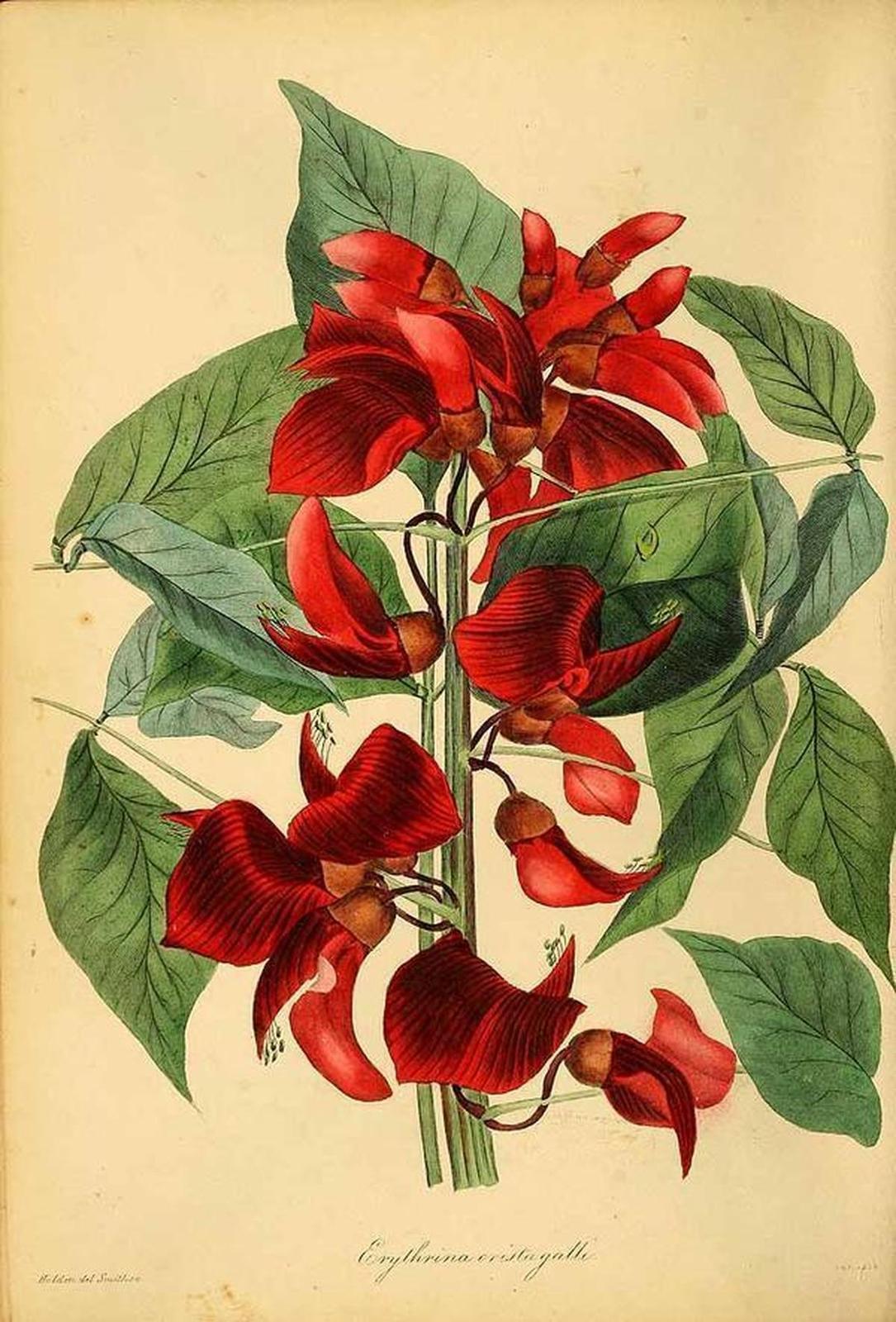Erythrina crista-galli L.
FabaceaeFrancisco de Albo fue uno de los contramaestre supervivientes de la expedición de Magallanes. En su Derrotero, la relación que del viaje hizo este piloto, se detiene a describir ciertos accidentes geográficos, como la desembocadura del Río de la Plata. A fecha de 20 de enero de 1520, Albo cuenta que “en derecho del cabo hay una montaña hecha como un sombrero al cual pusimos Monte Vidi”, del latín "vi un monte", en teoría reproduciendo lo que dijo el vigía de turno. Se dice que la actual capital de Uruguay, Montevideo, tomará su nombre de esta primeriza descripción del lugar que aparece entre las crónicas del viaje de Magallanes.
Hay un árbol sudamericano que tiene el honor de ser el árbol nacional tanto de Uruguay como de Argentina, dos países a ambos lados del estuario del Río de la Plata: el ceibo o árbol del coral. También lo es su flor, cuyo potente color carmesí inspiró la trágica historia de la nativa Anahí.
Cuenta la leyenda que Anahí, a pesar de su fealdad, deleitaba en las tardes veraniegas a toda la gente de su tribu guaraní con sus canciones inspiradas en los dioses y en el amor a la tierra; pero llegaron los invasores españoles, que arrasaron con todo a su paso y capturaron a Anahí. Tras un intento de fuga en el que la indígena intentó escapar apuñalando al centinela, los españoles decidieron darle muerte en la hoguera. La ataron a un árbol al que metieron fuego, un fuego que parecía no querer alargar sus llamas hacia la doncella indígena que, sin murmurar palabra, sufría en silencio, con su cabeza inclinada hacia un costado. Cuando el fuego comenzó a subir, Anahí se fue convirtiendo en árbol, identificándose con él. A la mañana siguiente, los españoles se encontraron ante un hermoso árbol de verdes hojas relucientes y flores rojas aterciopeladas, en todo su esplendor.
Procedencia
AmericanoCalendario
Hábitat
Morfología
 Árbol
Árbol
 Irregular
Irregular
 Pinnada
Pinnada
 Ovada
Ovada
 Elíptica
Elíptica
 Lanceolada
Lanceolada
 Entero
Entero
 Cuneada
Cuneada
 Obtusa
Obtusa
 Acuminado
Acuminado
 Agudo
Agudo
 Caduco
Caduco

 Powered by
Powered by